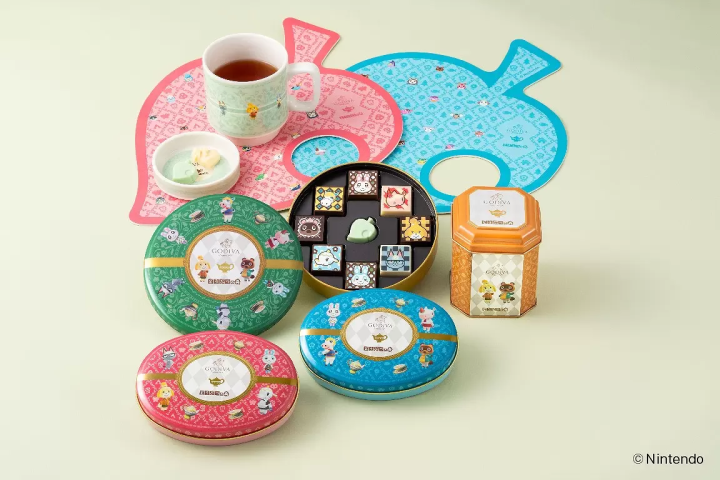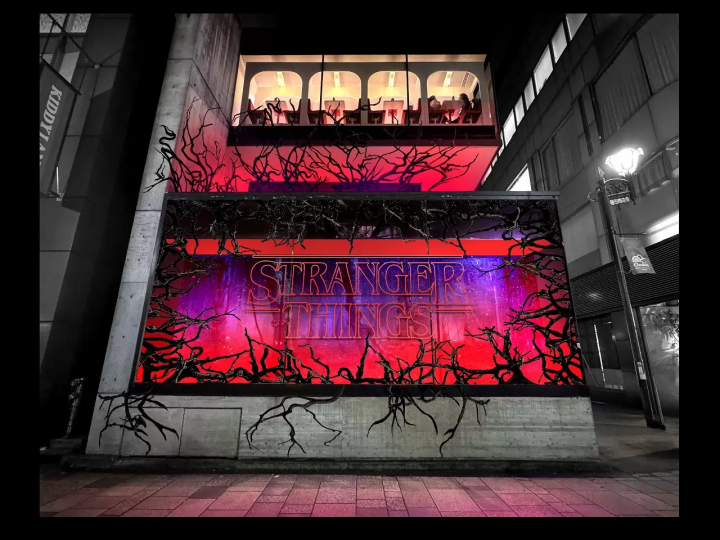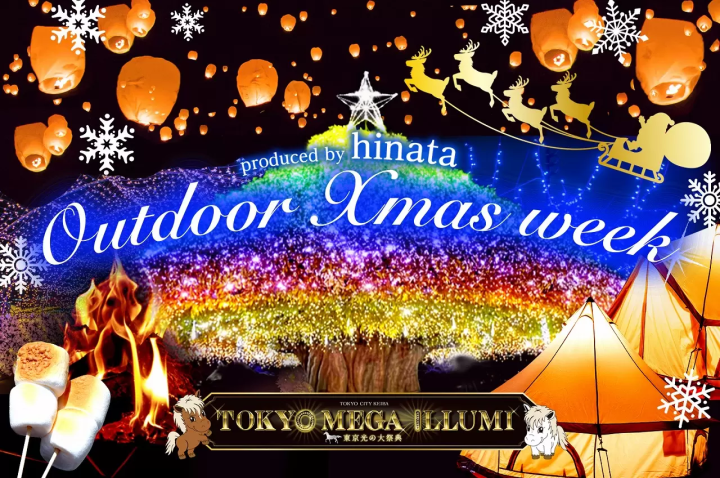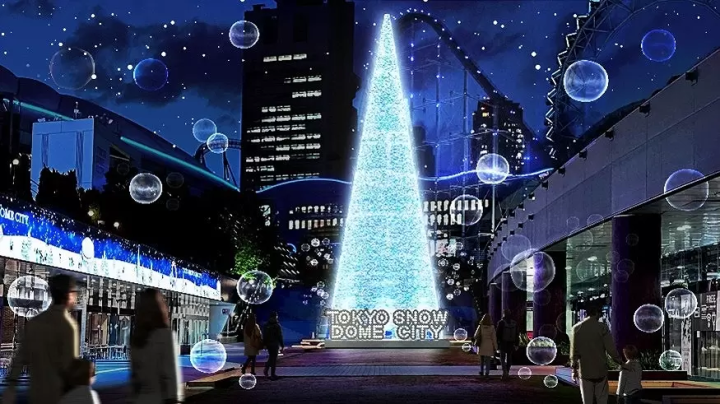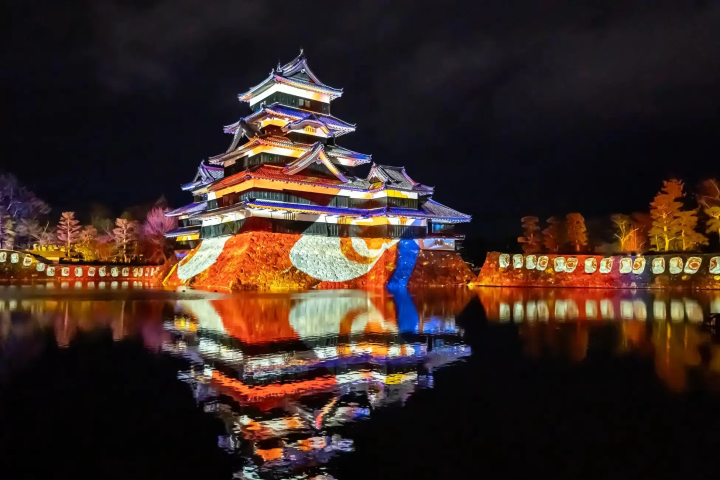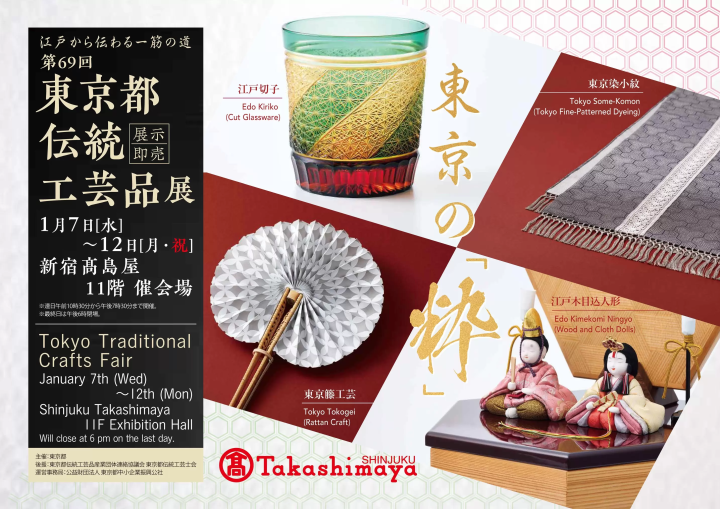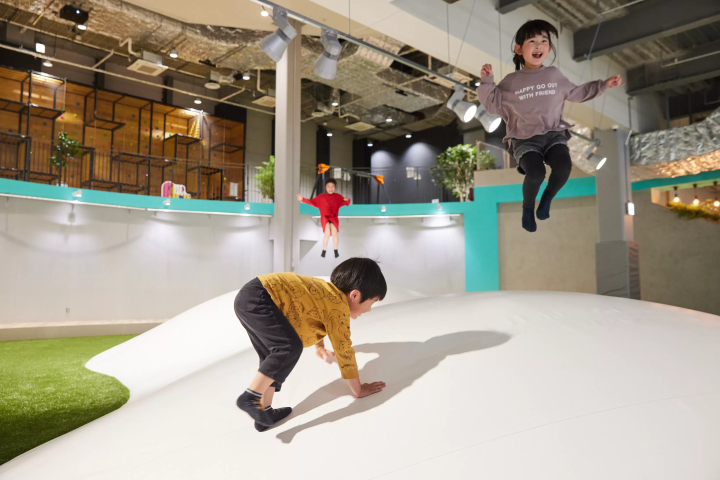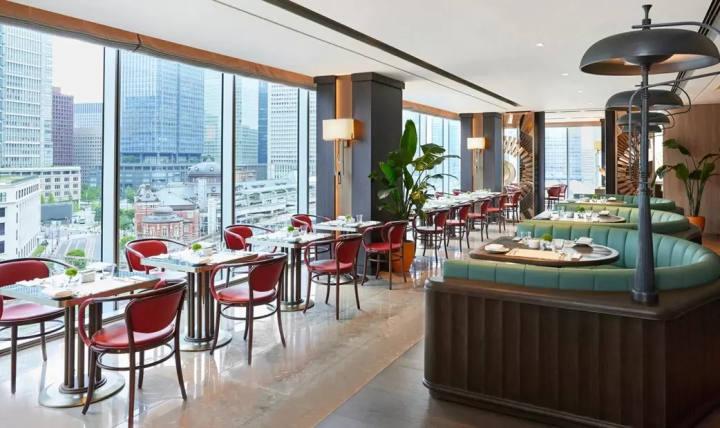Kagawa Diary - Revitalizing A Small Island Through Art

Setouchi Triennale, one of the largest contemporary art festivals in Japan, is being held this year in Kagawa. The Triennale has a deep impact on the lives of local residents. Read about the case of Awashima, a small island that is coming back to life thanks to the art festival.
Creating Art with the Locals - A Workshop within the Setouchi Triennale
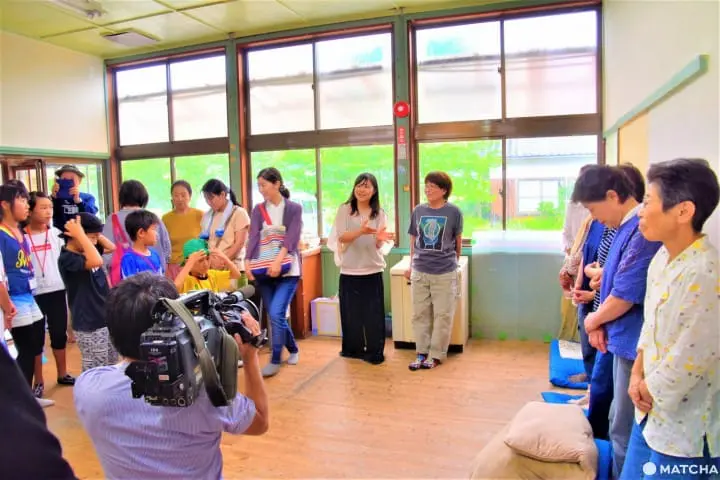
In the center of the photo, Maki Ohkojima and Etsuko Matsuda.
”Okay, everyone, let's make our own embroidery! It will become part of our artwork.”
It was a rainy day in July. The abandoned school with old wooden walls was crowded with more than fifty people. The school is located on an island called Awashima and they gathered for a workshop held by Maki Ohkojima, a young Japanese artist.
Awashima is one of the locations of Setouchi Triennale 2019. Other festival locations, such as Naoshima, which is famous for the exquisite artwork of Yayoi Kusama or the architecture by Tadao Ando, might be better known.
Awashima is located west of Naoshima. In the fall session of the Setouchi Triennale - from September 28 to November 4, 2019 - several works of art will be exhibited on this island. This workshop itself was also related to the Setouchi Triennale.
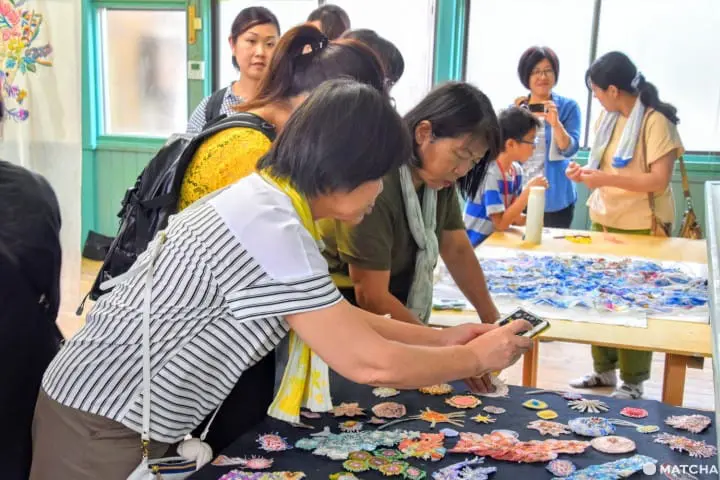
Most of the participants came from the cities nearby. There were many young women and mothers with children. The island residents became their teachers, explaining to the participants how to create beautiful embroidery.
Once the workshop started, the participants became quiet. They were all concentrating on their embroidery. Their hands were creating patterns in the shape of coral and plankton.
After about thirty minutes, joyful voices were exchanging words like "Well done!" and "Thank you!".
Awashima - An Island of Seafarers
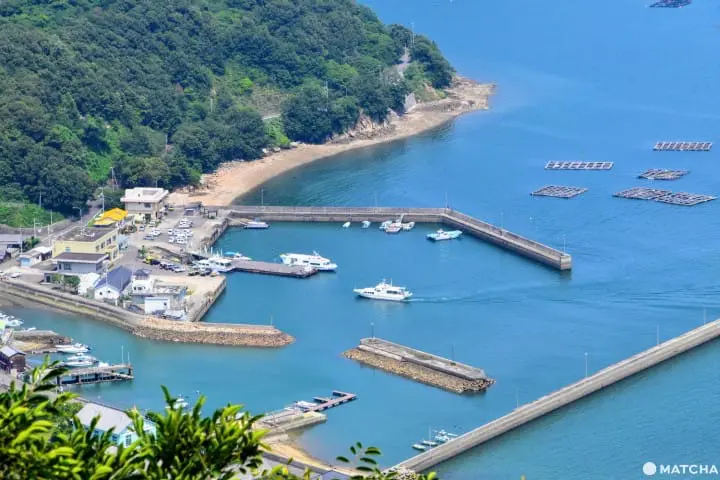
Awashima Port
Awashima is located in the western part of Kagawa prefecture. The island once thrived as a community of seamen.
In the Edo period (1603-1868), the Setouchi Inland Sea around Awashima was a hub of maritime logistics. At that time, many ships, which were either bound for or coming from Osaka, used to halt at the port of Awashima waiting for good wind or favorable tide.
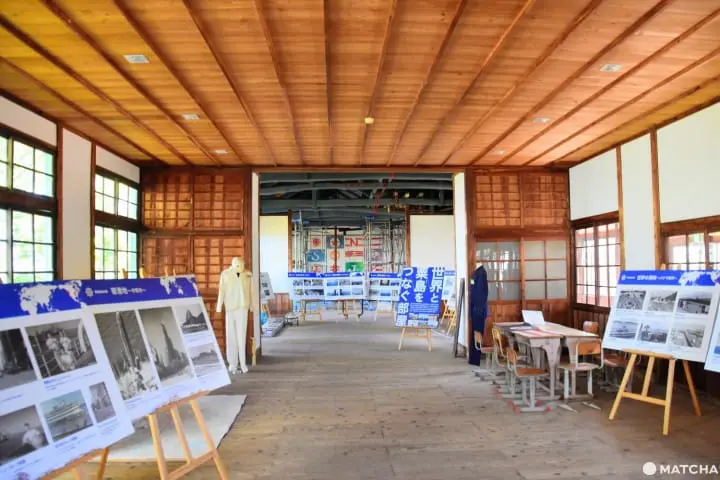
The former maritime school is currently the Awashima Maritime Museum.
In 1897, Japan's first maritime school was founded on Awashima Island. Many graduates were employed by companies of maritime logistics, sailing to Asia, Europe, and Africa. Some of the seamen traveled to about fifty countries.
In the 1950s, there were about 2000 people living on the island. At that time, there was at least one seafarer in every household, apparently. The island was vibrant with activity, which was centered around the maritime school.
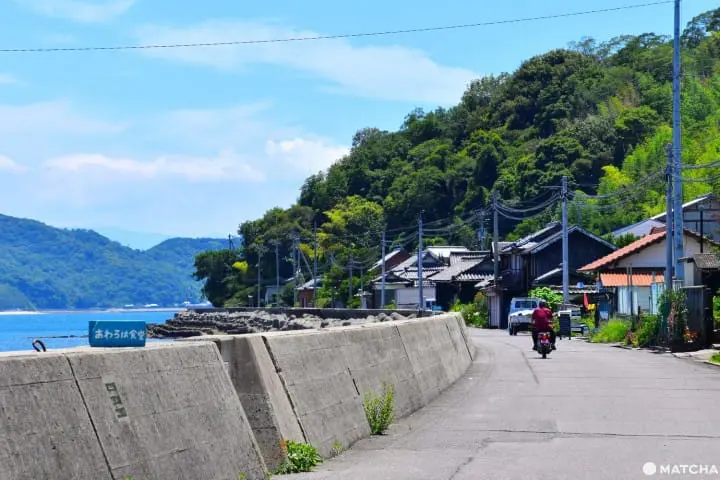
However, in the mid-1970s, the Japanese marine business started to decline. This resulted in many seamen losing their jobs. The school was abandoned in 1987 and many residents left the island. As the number of children kept decreasing, the junior high school and the elementary school were also abandoned.
At present, there are only about 200 residents left on the island. Many of them are elderly people. The island lost the vibrant atmosphere of the old days.
Nevertheless, we can now see omens of the island being revitalized.
"Maki and Mayur Made Us Cheerful Again"
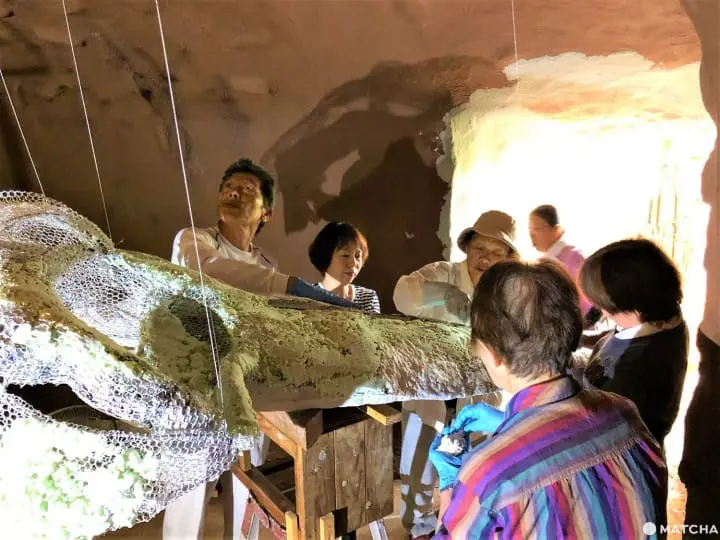
"Thanks to Maki and Mayur, old folks like us can now live cheerfully every day. They gave us back the motivation to live and opportunities to get together."
These are the words of Etsuko Matsuda, the leader of the local volunteers. She was speaking before the audience at the workshop.
The Mitoyo municipality, which manages Awashima Island, started an artist residency program in 2010. They invite a few artists every spring to stay on the island for three or four months. Their artwork is exhibited in the summer, as well as at the Setouchi Triennale, which is held once in three years.
Artist Maki Ohkojima from Japan and Indian artist Mayur Vayeda have been invited to do a residence program in Awashima in 2018 and 2019. They came to the island in May.
They work almost every day in the abandoned junior high school, which is now their atelier.
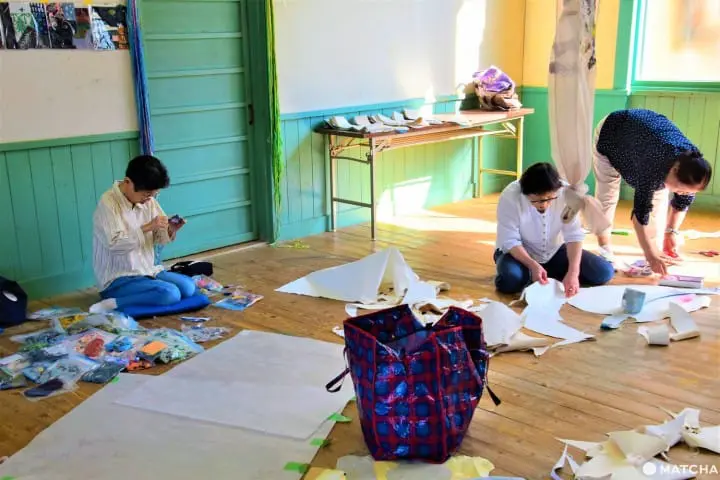
Local residents and volunteers from Mitoyo City help them out.
Many of the local residents are retired. In the morning, they do household work, take care of their gardens and vegetable fields or visit the hospital. In the afternoon, they gather in the atelier where they stay until the evening.
Female volunteers mainly focus on making embroidery while the male members work on art installations.
"I am worried about the terrible amount of work. I finish one task and Maki tells me to start another one right away. Ha ha ha". This is what Tetsushi Sato, another volunteer leader, told me jokingly.
They really enjoy their work, and the atelier of Maki and Mayur becomes like a cafe for cheerful chatting.
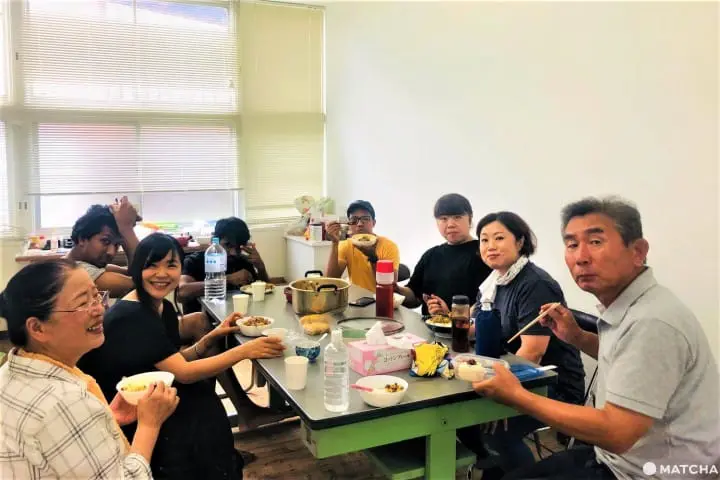
They often take their lunch together. Sometimes, Mayur cooks delicious Indian curry.
I also joined their lunch party a few times. The atmosphere was relaxing and joyful, and even Mayur seemed to be feeling at home with the locals.
Rural art festivals such as the Setouchi Triennale involve the collaboration between artists, local residents, and volunteers.
This doesn't mean that the relationship between them is always good. The artists don't always want the help of local residents, and sometimes it's the local residents who are closed-minded.
But in the case of Awashima in 2019, Maki and Mayur wanted to create an artwork for which the cooperation of local residents would be indispensable.
"I think that the open mind of the local residents also helped to create this joyful atmosphere", Etsuko added. "Many local residents are former seamen or their relatives. We are used to interacting with visitors from the outside."
The Resonation between Environment and Art
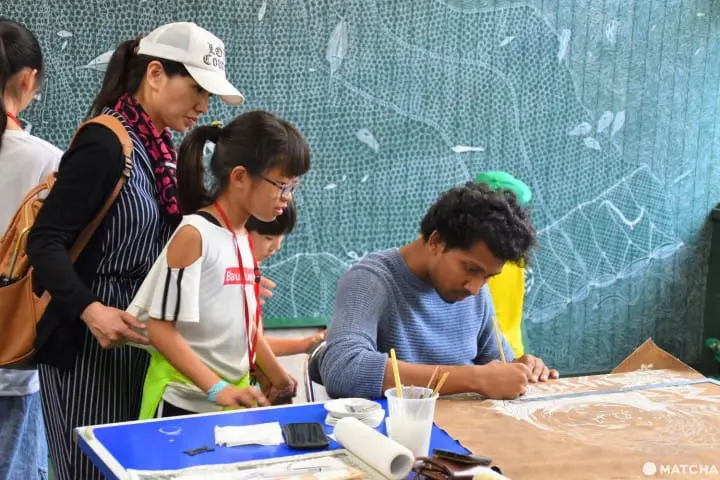
Mayur Vayeda at work
Maki and Mayur are both professional artists. Maki, born in 1987, is creating unique paintings with animals and marine life. She has held exhibitions in France and Japan.
Mayur is practicing Warli painting, a style of folk art from western India. He has held exhibitions in Europa and Asia, as well as lectures in India.
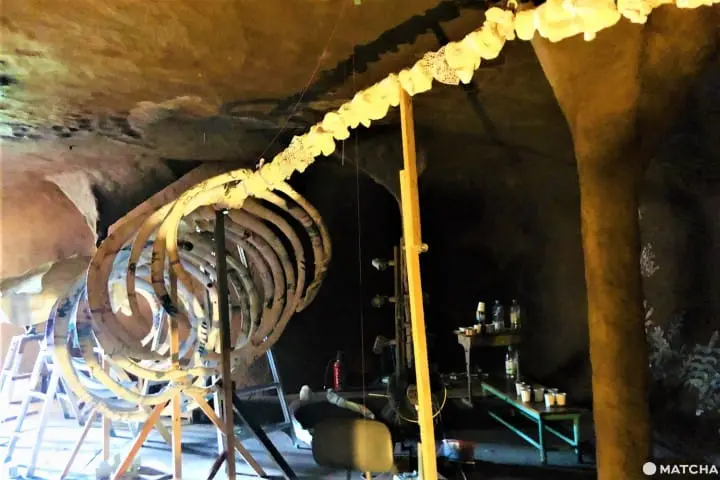
This time, they are creating a joint installation inspired by a cave and whales. The environment of Awashima seems to have influenced their inspiration.
Mayur was born in a jungle region and grew up surrounded by rich nature. Now he encountered these people who lived near the sea in Awashima. It was a very inspiring encounter.
A cave is a place where the ancestors of humankind once lived. It seems to me that he is seeking something related to the origins of humankind and maybe even a universal way of life for humanity by creating a cave.
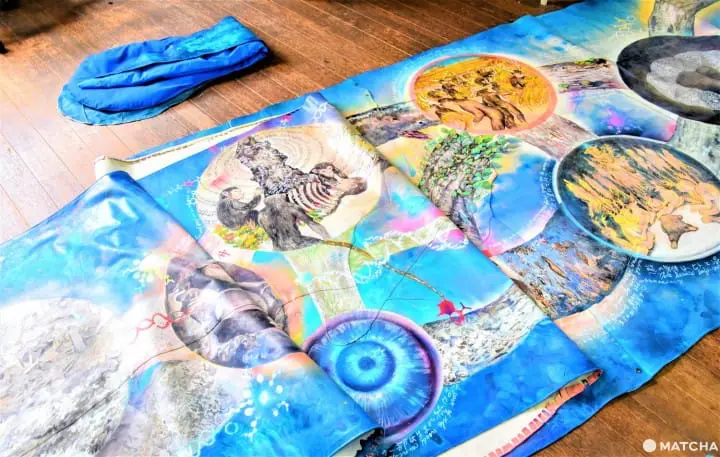
On the other hand, Maki wants to create ”messenger-whales who carry the voice of earth”.
Before coming to Awashima, she boarded on a ship supported by Tara Ocean Foundation and learned about the environmental problems faced by the sea.
One day she found the corpse of a whale floating on the sea. Many birds and fish gathered to eat it. She was shocked to see the scene of this food chain.
Afterward, she came to Awashima and started to live near the sea. This is when the image of the messenger-whales was born.
The messenger-whales tell us about the evolution of humankind and about the environmental problems related to the sea. I feel that this is her way of making the audience think "D'où venons-nous? Que sommes-nous? Où allons-nous?*"
*"Where Do We Come From? What Are We? Where Are We Going?" - the title of a picture by French artist Paul Gauguin.
A New Cafe and A Guesthouse Opened in Awashima
Thanks to the Setouchi Triennale and the artist-in-residence program, there are unique omens of change visible on Awashima.
First of all, various artworks are on display all-year-round on Awashima, inviting art lovers to visit the island. The Missing Post Office and the Sokosoko Creative Lab (Project for the Museum of Seabed Inquiry Ship in Setouchi) are especially popular. These are works of art created during previous editions of the Setouchi Triennale or within other art programs.
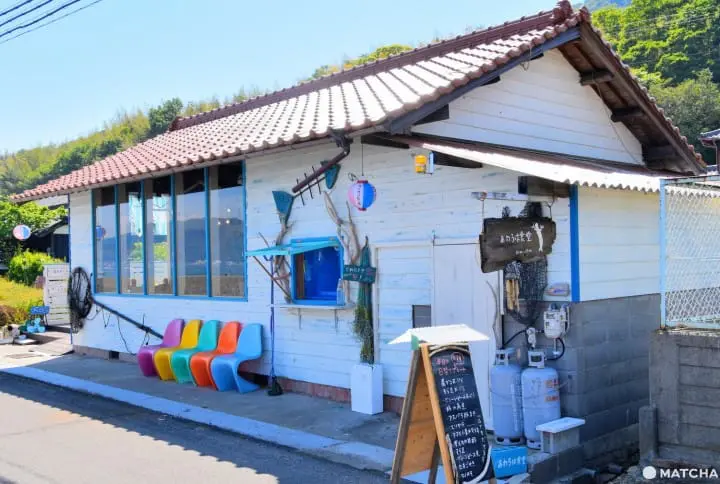
In 2018, the cafe restaurant Awaloha Shokudo opened on the island. The couple who owns the restaurant has been acting as a bridge between the artists and the island residents. They have supported the island's involvement in art-related projects since 2010.
This September, a new guesthouse will open in Awashima. Art Canvas Awashima will be filled with art pieces created by the artists who have stayed on the island.
Awashima is still suffering from depopulation, a phenomenon that reached critical levels. The future of the island is still uncertain. But I feel that the relationship between the locals and the artists is bringing a positive change to the island with long-term implications.
More than twelve artworks will be on display on Awashima in the fall of 2019. If you visit Awashima, you'll be able to see yourself how the story of revitalizing this small island goes on.




























